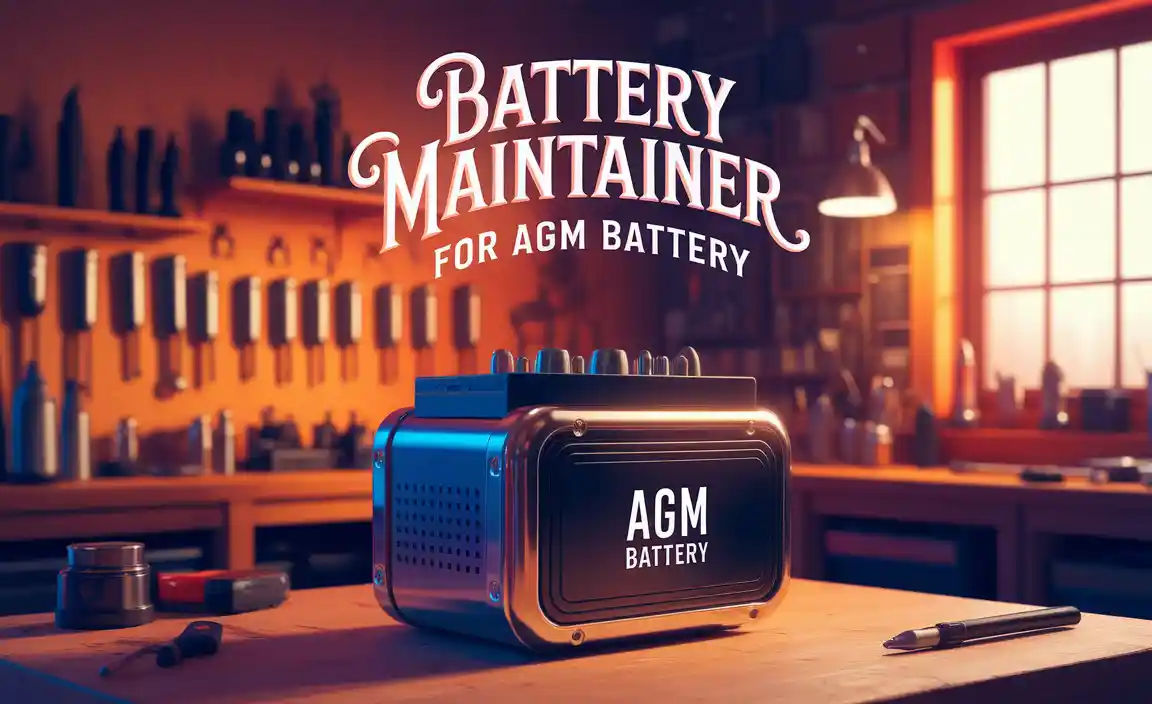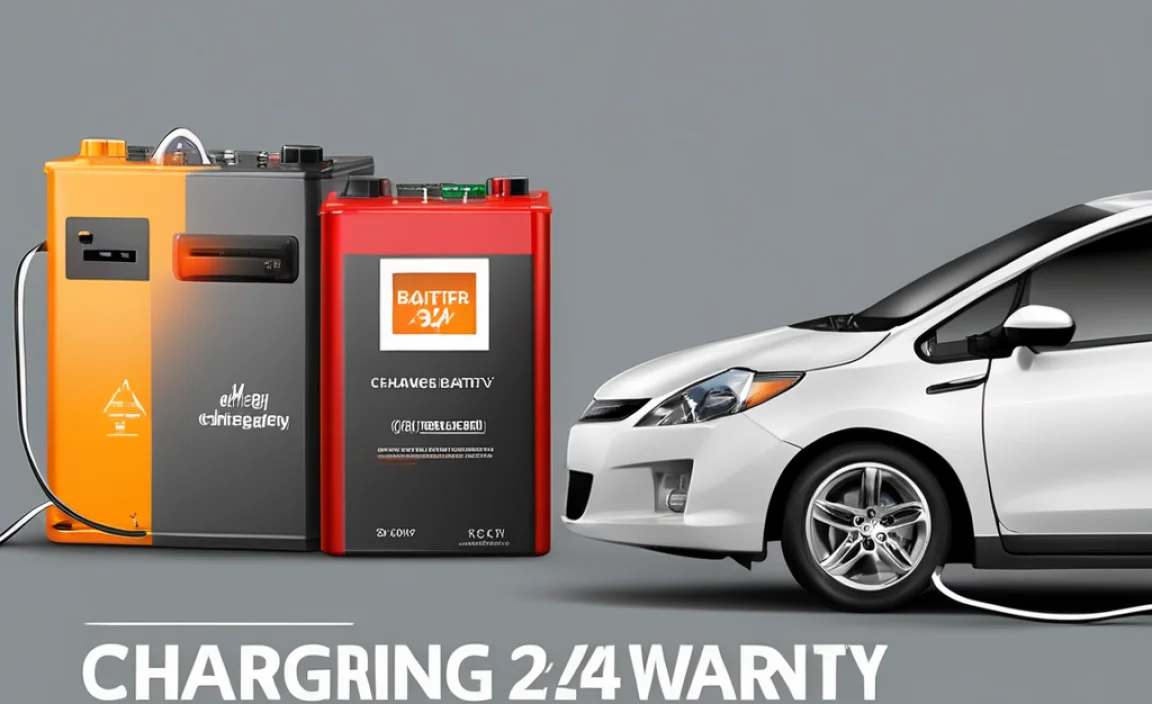An adapter plug for your camper is essential gear, allowing you to safely connect your RV to various campground power sources. Choosing the right adapter ensures consistent power for your adventures.
Hitting the road in your camper is exciting, but nothing dampens the RV spirit faster than realizing you can’t plug in. Power is the lifeblood of your mobile home – it runs your lights, charges your devices, and keeps your fridge humming. Unfortunately, not all campground power outlets are the same. That’s where the humble adapter plug comes in, acting as your portable power bridge.
This guide will break down everything you need to know about adapter plugs for your camper. We’ll cover why you need them, the different types you’ll encounter, how to choose the right one, and some important safety tips. By the end, you’ll feel confident about powering up your adventures wherever the road takes you.
Why Adapter Plugs are Essential Camper Gear
Think of your camper like a house on wheels. It needs electricity to function. Most campers come equipped with a specific type of power inlet, usually a 30-amp or 50-amp connection. However, campgrounds offer a variety of power pedestals, some of which might not match your camper’s plug directly. Without the correct adapter plug, you’re left powerless.
The Power Difference: Amperage Explained
Understanding amperage (amps) is key to grasping why adapters are necessary. Amps measure the flow of electrical current. More amps mean more power. Your camper is designed for a certain amperage, and connecting to a source with less power can lead to tripped breakers or insufficient power for your needs. Connecting to a source with more power than your camper is designed for is dangerous and can damage your RV.
- 15/20 Amp Service: This is your standard household electrical outlet. Most campers can run basic appliances like lights, phone chargers, and maybe a small fan on this.
- 30 Amp Service: This is a common standard for many smaller to medium-sized campers. It typically has three prongs (one hot wire, one neutral wire, and one ground wire) and provides more power than a standard outlet, allowing you to run more appliances simultaneously.
- 50 Amp Service: This is the highest standard and is found on larger RVs and at many full-service campsites. It typically has four prongs (two hot wires, one neutral wire, and one ground wire) and provides significantly more power, capable of running multiple high-draw appliances like air conditioners and microwaves at the same time.
Bridging the Gap: How Adapters Work
An adapter plug, often called a “dogbone” adapter due to its shape, simply converts one type of electrical connection to another. For example, you might have a 30-amp camper plug but arrive at a campsite that only has 50-amp outlets. A 50-amp female to 30-amp male adapter allows you to plug your 30-amp cord into the 50-amp pedestal. The adapter manages the power conversion, ensuring you get the right amount of electricity to your camper safely.
Common Adapter Plug Types for Campers
The world of RV electrical adapters can seem a bit confusing at first, but most campers only need to worry about a few key types. The most common configurations relate to 30-amp and 50-amp services.
30-Amp Adapters
A standard 30-amp RV service uses a plug with three prongs: a ground, a neutral, and a single 120-volt hot wire. This provides around 3,600 watts of power.
- 30-Amp Male to 50-Amp Female: This is incredibly common. It allows a camper with a 30-amp cord to plug into a 50-amp shore power outlet at a campground. The adapter essentially takes one of the hot wires from the 50-amp service and channels it into the 30-amp connection. You will only get 30 amps of power, not the full 50.
- 30-Amp Male to 15/20-Amp Female: This adapter lets you plug your 30-amp RV cord into a standard household outlet. This is useful for “boondocking” (camping without hookups) at a friend’s house or for running minimal power needs when a full RV hookup isn’t available. Be mindful that you’ll have much less power, so you can’t run high-draw appliances like air conditioners or multiple kitchen appliances simultaneously.
50-Amp Adapters
A 50-amp RV service uses a larger plug with four prongs: a ground, a neutral, and two 120-volt hot wires (each providing 50 amps). This setup provides around 12,000 watts of power, significantly more than 30-amp service.
- 50-Amp Male to 30-Amp Female: This adapter allows a camper with a 50-amp cord to plug into a 30-amp shore power outlet. It’s important to understand that this adapter will only deliver 30 amps of power. You’ll need to manage your power usage carefully, as you won’t have the full 50 amps available, and running high-demand appliances might overload the circuit.
- 50-Amp Male to 15/20-Amp Female: This adapter lets you plug your 50-amp RV cord into a standard household outlet. Similar to the 30-amp to household adapter, this is for very limited power needs only. You will likely only be able to run a few lights and charge devices slowly.
Straight Blade Adapters (Less Common for RVs)
You might also encounter adapters that convert between different configurations of standard household plugs (e.g., a 15-amp plug to a 20-amp plug). While these are common in household electrical work, they are less frequently the primary adapter needed for RV shore power, which primarily deals with 30-amp and 50-amp RV-specific connectors.
It’s also worth noting the existence of “power management systems” or “RV surge protectors” that often incorporate adapter functions. These devices are highly recommended as they protect your RV’s electrical system from voltage spikes and surges, which can be caused by faulty wiring at the campsite. Many also have built-in adapters to switch between 30-amp and 50-amp connections.
Choosing the Right Adapter Plug
Selecting the correct adapter plug is straightforward once you know what to look for. It boils down to matching the plug on your camper’s power cord to the outlet type at the campground, or vice versa, while respecting the amperage limits.
Step 1: Identify Your Camper’s Power Cord Plug
The easiest way to do this is to look at the end of the power cord that plugs into the camper itself, or the end that plugs into the campground pedestal. You’ll typically see one of two common RV plugs:
- TT-30P (30 Amp): This is a 3-prong plug, with one angled flat blade and two straight prongs. It’s specifically designed for 30-amp RV service.
- 14-50P (50 Amp): This is a larger, 4-prong plug, with two angled flat blades and two straight prongs. This is for 50-amp RV service.
Step 2: Identify the Campground Pedestal Outlet Type
When you arrive at a campsite, look at the electrical box (pedestal) where you’ll be plugging in. You’ll need to identify the outlet shape and size. Campgrounds typically have one or more of the following:
- 30-Amp RV Outlet (TT-30R): Three slots, matching the TT-30P plug.
- 50-Amp RV Outlet (14-50R): Four slots, matching the 14-50P plug.
- Standard Household Outlet (NEMA 5-15R or 5-20R): The familiar three-hole outlet found in homes.
Step 3: Select the Adapter Based on Your Needs
Now, match your camper’s plug to the pedestal outlet. Here are the most common scenarios and the adapter needed:
- Camper has a 30-amp cord (TT-30P) and campground has a 50-amp outlet (14-50R): You need a 30-Amp Male to 50-Amp Female Adapter (often called a 30-to-50 amp dogbone).
- Camper has a 50-amp cord (14-50P) and campground has a 30-amp outlet (TT-30R): You need a 50-Amp Male to 30-Amp Female Adapter (often called a 50-to-30 amp dogbone). Remember, you will only get 30 amps of power.
- Camper has a 30-amp cord (TT-30P) and campground has a standard household outlet (NEMA 5-15R/20R): You need a 30-Amp Male to 15/20-Amp Female Adapter.
- Camper has a 50-amp cord (14-50P) and campground has a standard household outlet (NEMA 5-15R/20R): You need a 50-Amp Male to 15/20-Amp Female Adapter. This is for minimal power only.
Table: Common Adapter Plug Configurations
| Your Camper Cord Plug | Campground Outlet Type | Adapter Needed | Notes on Power Output |
|---|---|---|---|
| 30-Amp (TT-30P) | 50-Amp (14-50R) | 30A Male to 50A Female | Delivers 30 amps. |
| 50-Amp (14-50P) | 30-Amp (TT-30R) | 50A Male to 30A Female | Delivers 30 amps. Manage power usage. |
| 30-Amp (TT-30P) | Standard Household (15/20A) | 30A Male to 15/20A Female | Delivers 15 or 20 amps. Minimal power. |
| 50-Amp (14-50P) | Standard Household (15/20A) | 50A Male to 15/20A Female | Delivers 15 or 20 amps. Very limited power. |
Considerations for Heavy Power Users
If your camper has multiple high-draw appliances like two air conditioners, a residential refrigerator, and a washer/dryer, you’ll primarily need to ensure you’re connecting to a 50-amp service whenever possible. Using adapters to connect to lower amperage sources than your camper is designed for can lead to problems:
- Overloading the Circuit: Trying to run too many appliances on a 30-amp or household circuit will trip the breaker at the pedestal or in your RV’s power distribution panel.
- Insufficient Power: Appliances might not run at full capacity, or at all, if the available amperage is too low. Air conditioners, for instance, draw a lot of power and may not start or run effectively on less than 30 amps.
For many RVers, a good quality surge protector that also functions as an adapter is a wise investment. These often provide status lights to indicate proper voltage and polarity, adding an extra layer of protection. Reputable brands offer robust protection against power surges common in campground hookups.
Important Safety Tips for Using Adapters
Electricity is powerful, and safety should always be your top priority. Using adapter plugs incorrectly can lead to dangerous situations, damage to your RV, or even fire hazards.
1. Always Disconnect Power First
Before plugging or unplugging any adapter or power cord, whether at the RV or the pedestal, ensure that the power source is turned OFF. Most campground pedestals have a main circuit breaker switch. Flip this switch to the OFF position before making any connections.
2. Use the Right Adapter for the Job
As we’ve discussed, using the wrong adapter can lead to damage. For example, using a 50-amp male to 30-amp female adapter at a 30-amp outlet means you’re only getting 30 amps. If your 50-amp RV tries to draw more power than that, you risk tripping breakers or damaging components.
3. Check for Damage
Periodically inspect your adapter plugs and power cords for any signs of damage, such as cracked casings, frayed wires, or bent pins. Damaged equipment is a significant safety risk and should be replaced immediately. A damaged adapter can lead to short circuits or arcing, posing a fire hazard.
4. Understand Amperage Limitations
When connecting to a lower amperage source (e.g., using a 50A to 30A adapter, or a 30A to 15/20A adapter), you must manage your power usage. Don’t try to run your air conditioner and microwave simultaneously on a 30-amp connection, for example. This is a common cause of tripped breakers.
5. Secure Connections
Ensure that all connections are tight and secure. A loose connection can lead to arcing, which generates heat and can melt the plastic housing of the plug or the outlet, creating a fire risk. Many RV plugs and adapters have locking rings that should be tightened to ensure a secure fit.
6. Use a Quality Surge Protector
While not strictly an adapter, a good RV surge protector is an essential piece of gear. It protects your sensitive RV electronics from voltage spikes and brownouts that can occur at campground power sources. Many also include diagnostic lights that can alert you to wiring issues at the pedestal before you plug in. Brands like Hughes Autoformers and Progressive Industries are well-regarded in the RV community.
7. Keep Adapters Dry
Water and electricity are a dangerous combination. Always try to keep your adapter plugs and connections dry, especially in wet weather. Avoid leaving cords plugged in and exposed to heavy rain for extended periods if possible, or ensure good shelter over the connections.
For more on electrical safety, the National Fire Protection Association (NFPA) offers extensive resources on electrical safety in homes and recreational areas.
Maintaining Your Electrical Connection
Beyond just having the right adapter, a little maintenance can go a long way in ensuring a reliable and safe electrical connection for your camper.
Regular Cleaning
Over time, the prongs on your adapter plugs and the inside of your RV’s shore power inlet can accumulate dirt, debris, or corrosion. This can impede the electrical connection, leading to reduced power or overheating. Periodically clean the metal prongs with a wire brush or contact cleaner. For the RV inlet, a shot of electrical contact cleaner can help. Ensure everything is completely dry before reconnecting power.
Proper Storage
Store your adapter plugs and power cords in a clean, dry place when not in use. Many RVers use durable storage bags or containers to keep them organized and protected from moisture and damage. Avoid storing them where they can be kinked or crushed, as this can damage the internal wiring.
Testing Your System
Before a long trip, or at the start of a camping season, it’s a good idea to test your electrical system. Plug into a known good power source (either at home or a familiar campground) and check if all your appliances are running correctly. If you have a surge protector with diagnostic lights, pay attention to their signals. If you suspect an issue, consider having a qualified RV technician inspect your electrical system.
FAQ Section
Q1: What is the most common adapter plug for a camper?
The most common adapters involve converting between 30-amp and 50-amp RV services, or connecting to a standard household 15/20-amp outlet. A “dogbone” adapter, which converts one type of RV plug (like 30A) to another (like 50A), is frequently used.
Q2: Can I use a 50-amp adapter on a 30-amp outlet?
Yes, but you need the correct adapter: a 50-amp male plug (for your 50A RV cord) connecting to a 30-amp female receptacle (for the campsite’s 30A outlet). It’s crucial to understand that this setup will only provide 30 amps of power, not the full 50 amps your RV might be designed for






